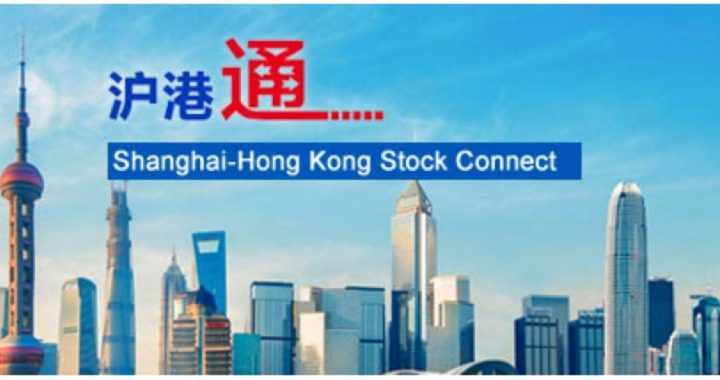
During Monday’s session, stocks traded on the Shanghai stock market fell to their lowest level since June 2008, losing nearly eight percent.
Hardest hit were three brokerages that have been heavily involved in allowing Chinese small investors to open margin accounts, through which investors are able to borrow a portion of the money needed to buy securities, using the securities as collateral. When many of them were unable to settle their accounts, rather than forcing margin calls (a demand by a broker that an investor deposit further cash or securities to cover possible losses), the brokerage houses simply allowed them to keep their accounts open. The Chinese regulators learned about this, and on Sunday prevented the big three operators from opening any new accounts for three months.
Consequently those big three — Citic Securities, Haitong Securities, and Guotai Junan Securities — saw their shares lose one-sixth of their values on Monday, with observers predicting further losses in the coming days.
Margin lending to buy stocks in Shanghai has risen by nearly 200 percent in just the last year, and another nine percent in the first two weeks of January. As a spokesman for Bank of America noted, it took Wall Street 23 years to go from margin trading representing just 0.9 percent of the market’s total capitalization to 2.4 percent. It took China just 17 months. As a result, share prices have bolted more than 60 percent since last July, with most of the new money coming from mom and pop investors seeking to cash in on the latest China bubble. With towering returns, and margin requirements of 100:1, the temptation to play was simply overwhelming.
Those small investors are in for an unhappy week. Hao Hong, an analyst at Bocom International, said:
[The announcement by China’s regulators was] a nasty surprise. With less incremental liquidity flow[ing] into stocks, and the dampened sentiment, the market will correct in the near term, and the move can be violent.
This comes on top of the bad news from the imploding housing sector on Sunday that China’s real estate market “saw a sharper than expected downturn last year,” with private-sector home prices dropping in 68 of the 70 cities surveyed by the National Bureau of Statistics. Predictably, mortgage lending fell as well despite efforts of the country’s central bank to prop it up with lower interest rates.
Bubbles have been defined “as a situation in which asset prices appear to be based on implausible views about the future.” Once they burst, the “financial instability hypothesis” kicks in: Bubbles burst progressively, with the most vulnerable — i.e., highly-leveraged — asset classes falling first, and then the collapse spreading through the country’s economy.
Jesse Colombo is known as a “bubble observer and commentator,” specializing in uncovering and exposing latent bubbles around the world. A frequent contributor to Forbes, he is currently focused on the China bubble:
[It] started out as a boom based on successful economic reforms and modernization that helped to lift hundreds of millions [of Chinese] out of poverty, while eventually devolving into an orgy.
The orgy began with wild real estate speculation resulting in the reckless construction of empty cities funded by loans from banks, both above-ground and in the shadows. At first the combination of easy money, privatization of farms, the legalization of free enterprise and the sell-off of half of the government’s state-owned enterprises to private investors led to China’s unprecedented growth. China’s GDP grew at nearly 10 percent a year from 1978 through 2010, doubling its output every seven years. It leapfrogged ahead of the U.K. in 2005, Germany in 2009, Japan in 2010, and the United States in 2014.
Housing prices were the first to enjoy the boom that turned into a bubble, soaring 140 percent nationwide from 2007 to 2011, while in Beijing prices went up eight-fold in that period. At the top, houses were selling for an astronomical 27 times a borrower’s income, compared to just four times in the United States.
Colombo traced the China bubble from its start in real estate to the “wine bubble,” where Chinese investors were buying a lot (300 bottles) of Chateau Lafite-Rothschild for $539,000 to the “luxury car bubble,” where Maseratis and Ferraris were selling “like Italian pastries.” It spread from there to the “art bubble,” where a Ming vase sold at auction for more than $21 million. As Colombo wrote in December 2011:
China has clearly veered off its successful original path of reform and modernization [as] large parts of [its] economy has devolved into a classic bubble.
China will soon face the terrible consequences that inevitably come … [when] bubbles of this magnitude pop.
When that time comes, and perhaps it just arrived on Monday, investors and brokers alike will learn the real state of economic affairs in China but also, as the blogger at Troy Ounce so elegantly expressed it:
The reality that everyone is broke and can collect nothing from the bankrupt, who are owed unlimited amounts by the insolvent, who are attempting to make late payments on a bank holiday in the wrong country, with an unacceptable currency, against defaulted collateral, of which nobody is sure who holds title.
A graduate of an Ivy League school and a former investment advisor, Bob is a regular contributor to The New American magazine and blogs frequently at www.LightFromTheRight.com, primarily on economics and politics.



